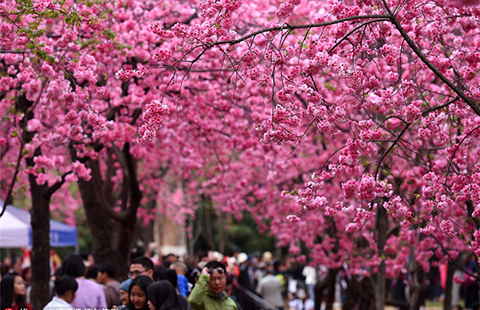Discoveries shed light on past, and the present
Updated: 2016-10-12 00:23
By Earle Gale in London(chinadaily.com.cn)
|
||||||||
Among the haul of more than 10,000 artifacts found at the fantastic Haihunhou (Marquis of Haihun) tomb in Jiangxi province are 2,000-year-old bronze, gold, silver and jade relics that have led the experts to deduce that distilled wine was being made and drunk in China 1,000 years earlier than previously thought.
And other artifacts point to the fact that the famous Chinese hot pot dish – which, like distilled wine, is still popular today – was being eaten much earlier than was previously known.
And we have learned that the ancient Chinese were also great innovators who grappled with the problem of air pollution. This nugget of information comes from the discovery of two ancient bronze lamps buried in the tomb that would have had the ability to "swallow" smoke produced by the burning wick. It was consumed by a reservoir of water hidden within the lamp.
It's highly likely that the experts will make other important discoveries as they sift through the treasure trove of items found on the 40,000-square-meter site that contains eight tombs in total and a chariot burial that evokes memories of the famous Sutton Hoo ship burial in the UK. There, Raedwald, the ruler of the East Angles, was interred in the 7th century within a wooden warship buried in the Suffolk heartland of his kingdom.
The exciting discoveries in Jiangxi province have told us much about the ancient Chinese but they are not the only excavations that have recently been causing the rewriting of some of the history of ancient China.
Excavations last month of a small Roman cemetery in south London that was in use between the 2nd and 4th centuries have unearthed the remains of two people who were certainly Asian and most probably Chinese.
The skeletons surprised experts who had previously believed the Chinese and Roman civilizations, which were both massively influential at the time, had only minimal contact with one another. Now, the experts are wondering whether the ancient civilizations had more interaction than was previously thought.
While the discovery is fascinating because of what it tells us about ancient China, I was also interested to learn just how cosmopolitan London was, almost 2,000 years ago.
Of the 20 sets of bones unearthed in the cemetery in the capital's Southwark neighborhood, there were four African people in addition to the two Chinese. Previous excavations of other Roman sites in London also suggest it was a very cosmopolitan city and home to one of the most advanced civilizations of the time.
People wanted to live in the Roman Empire's Londinium, as it was known then, because it was a major commercial and bureaucratic center and because they were attracted to its dynamism.
The discoveries made at the Marquis of Haihun tomb in Jiangxi province and in the Roman cemetery in London tell us a lot about the ancient past but, with the realization that the ancients liked alcohol, hot pot, clean air and civilized life in a fast-paced vibrant city, and that they were mobile and interactive, they tell us that our ancestors were actually much the same as we are today.
- Hollande, Merkel, Putin discuss how to implement Minsk peace deal
- Pentagon vows to respond to attempted missile attacks at US destroyer near Yemen
- NASA to invite private companies to install modules on space station
- Trump accused of inappropriate touching by two women
- White House denounces terror attacks in Afghanistan
- Republican voters frown on party establishment's criticism of Donald Trump

 Take a glimpse into soccer-related gifts of Xi
Take a glimpse into soccer-related gifts of Xi
 Precious relics of debauched king on display in Jiangxi
Precious relics of debauched king on display in Jiangxi
 In pics: Britain's Kate visits the Netherlands
In pics: Britain's Kate visits the Netherlands
 Qizai, rare brown giant panda in China
Qizai, rare brown giant panda in China
 Everything you always want to know about Macao
Everything you always want to know about Macao
 World's top 10 most valuable unicorn companies
World's top 10 most valuable unicorn companies
 Carver finds fame, money in wood sculptures
Carver finds fame, money in wood sculptures
 Missile destroyer to become local military-themed park
Missile destroyer to become local military-themed park
Most Viewed
Editor's Picks

|

|

|

|

|

|
Today's Top News
Trump outlines anti-terror plan, proposing extreme vetting for immigrants
Phelps puts spotlight on cupping
US launches airstrikes against IS targets in Libya's Sirte
Ministry slams US-Korean THAAD deployment
Two police officers shot at protest in Dallas
Abe's blame game reveals his policies failing to get results
Ending wildlife trafficking must be policy priority in Asia
Effects of supply-side reform take time to be seen
US Weekly

|

|







